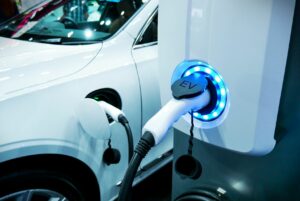California Approves a Program to Install 37,800 Electric Vehicle Chargers
The State of California has taken another leap to support electric vehicle owners and manufacturers. On August 27th, the California Public Utilities Commission formally approved a plan from investor-owned utility Southern California Edison (SCE) to fund approximately 37,800 electric vehicle charging ports within its service territory. Under the program, known as Charge Ready 2, SCE will install and maintain the charging infrastructure, while program participants will own, operate and maintain qualified charging stations. SCE will also provide rebates to lower the cost of program participation, including an expanded rebate program to support EV charging ports in new multifamily dwellings under construction.

Of the $436-million-dollar budget, $417.5 million will fund the charging infrastructure for Level 1, Level 2, and direct current fast chargers, while the remaining funds will be used for marketing, education, outreach, and evaluation programs. The utility, which provides power to 15 million people across 50,000-square miles of Southern California, has committed to install 50% of these chargers in disadvantaged communities that are often disproportionately impacted by air pollution.
This program expands the Charge Ready Pilot program, which began three years ago, and joins SCE’s Charge Ready Transport, which aims to provide charging to support 8,490 medium- and heavy-duty electric vehicles over the next five years.
The Charge Ready 2 program will benefit current owners of electric vehicles by increasing charging options and possibly enhancing the market for used electric vehicles, making electric vehicles a more affordable option for more consumers. The program will also encourage the purchase of new electric vehicles, which will benefit not only consumers wanting to own an EV, but also manufacturers who must meet their required percentage of zero emission vehicle sales. Under California law, which has also been adopted by several other states under the federal Clean Air Act, manufacturers must produce enough zero emission vehicles to meet the minimum credit requirement, which increases by 2.5% annually. For example, for model year 2020 vehicles, a manufacturer must produce enough zero emission vehicles to have credits equal to 9.5% of the manufacturer’s average fleet sales in model years 2016-2018.